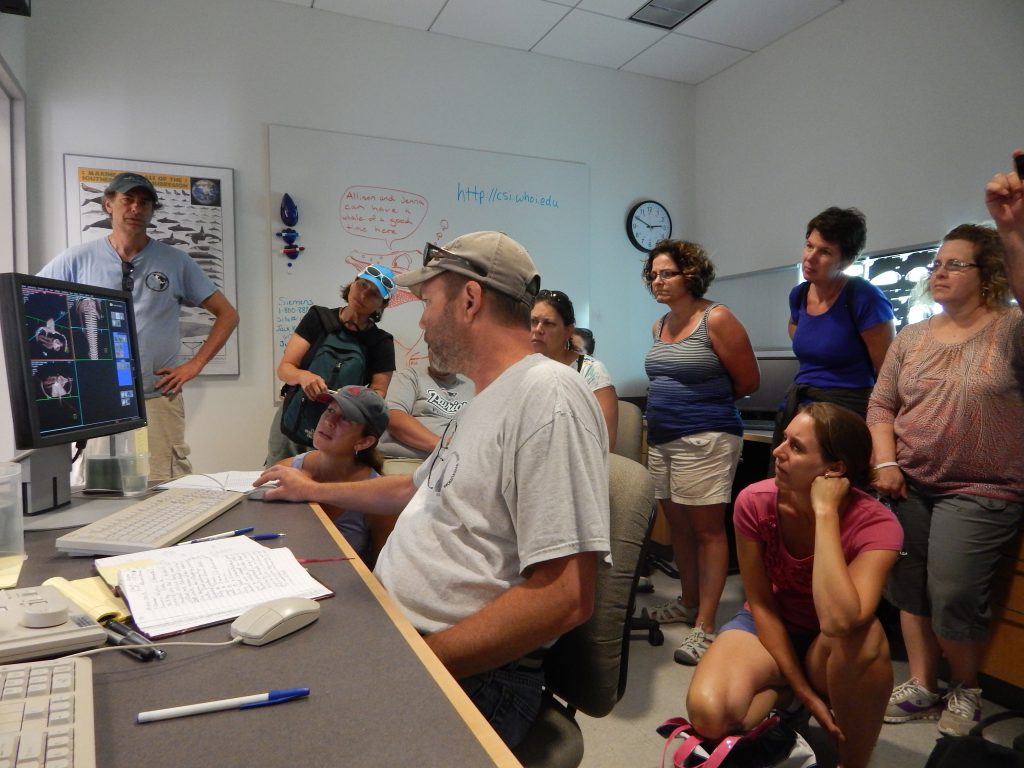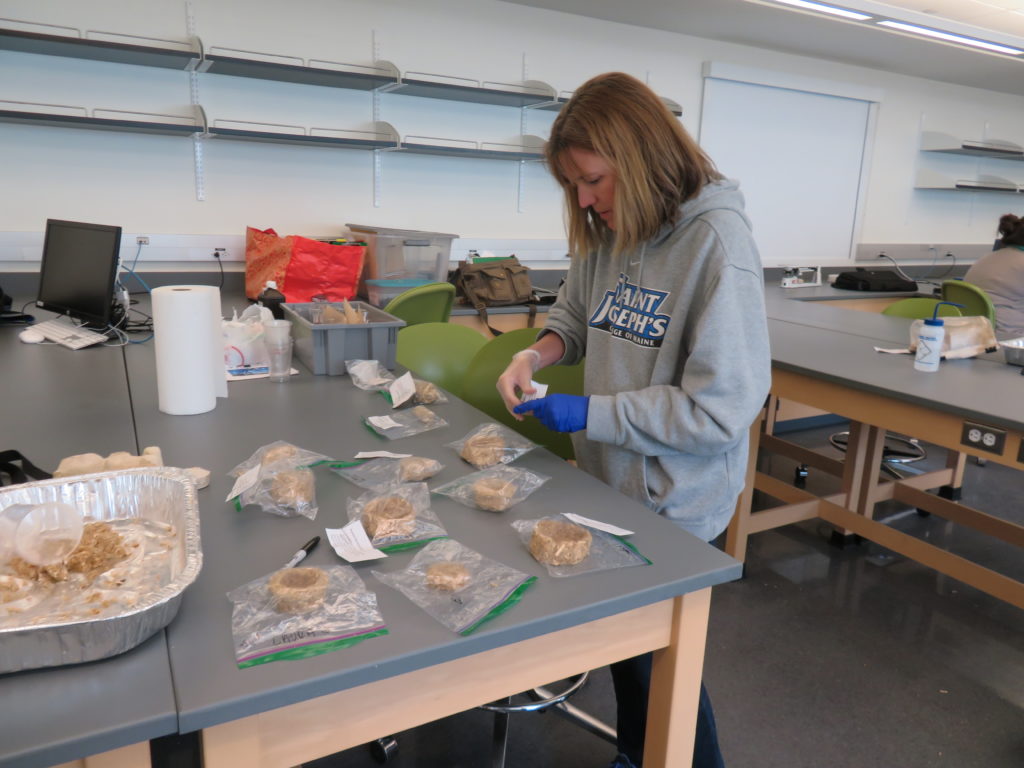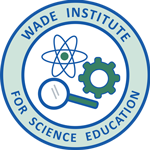Monday, August 16, 2021
For Immediate Release
My Soda Bottle Ended Up Where?
Educators Investigate Plastic Problems, Solutions, and Alternatives
Quincy, MA – How much plastic do we use on a daily basis and where does it go afterward? What are the environmental and human health impacts of our plastic habit? Middle and high school educators from Massachusetts, Connecticut, Texas, and California followed the journey of plastics from cradle to grave through themes of chemistry, sustainability, and engineering during the Wade Institute for Science Education’s 2021 Summer Professional Development Institute, My Soda Bottle Ended Up Where? Exploring Plastic Problems and Solutions. Educators assessed their personal plastic usage, surveyed debris in their communities, observed the global impacts of plastic pollution, and met innovators developing waste management practices and plastic alternatives.
Teachers gathered virtually from July 19th – 23rd to investigate the environmental impacts of human plastic consumption and to determine ways in which they can support sustainable solutions to the global health problem of plastic pollution. They learned how plastics are made, what recyclers do with different types of plastics, and why plastic waste ends up in our green spaces and blue ocean. Educators began their investigative process by conducting a cleanup of their communities and contributing their findings to Ocean Conservancy’s Clean Swell citizen science initiative. Sorting through their collections, they identified the seven types of plastics and discussed which are considered trash and which can be recycled. Some educators found themselves wanting to place all plastics in the recycling bin, even though they weren’t certain that the items could be recycled. Their hopeful “wishcycling” efforts prompted conversations about the challenges of changing behaviors for positive future outcomes.
My Soda Bottle Ended Up Where? educators followed their plastic waste to its final resting place and discovered that only a small portion of our plastic is recyclable. What happens to some of it? Using the phenomena of oceanic garbage patches to guide their investigative process, teachers explored how plastic debris and microplastics are introduced to the environment via watersheds. They observed plastics entering waterways through storm drains and learned that microplastics from our clothing are shed into wastewater during laundry cycles. Joined by Salem Sound Coastwatch and SEA Education Association, educators engaged in hands-on, minds-on, inquiry-based investigations that modeled ocean currents, compared the photodegradation process of plastics, and assessed the distribution of plastics within the upper water column of garbage patches. They learned about community action initiatives being implemented in Salem to mitigate the environmental and human health impacts of plastics, and were introduced to at-sea research being conducted throughout the globe by students taking an interest in solving our plastic problem.

Educators explored how plastics find their way to our waterways and to the ocean.
What more can we do?! Educators focused on innovative solutions being developed and deployed in America to help keep toxic plastic waste out of landfills and to decrease the potential for “ocean-bound” plastics debris. Thinking back on their community cleanup, teachers turned to the recycling industry as a possible solution. They heard from David Spencer, Co-founder of wTe Corporation, inventor of the high performance metal casting technology known as Rheocasting® / Thixocasting® processes, and developer of the novel plastics recycling process utilized by UltrePET® to supply one of the world’s largest novel polyethylene terephthalate (PET soda bottle) re-claimers with clean pellets. Educators got a behind-the-scenes look at the waste management industry that challenged their attempts at “wishcycling.” It turns out that only numbers one and two post-consumer plastics are currently recyclable in the United States and that other plastic types are often burned at waste-to-energy facilities. Interestingly, the conversation looped back to clothing because PET fibers produced through the recycling process can be used to make wearable materials.
Recognizing that recycling is just one method of solving the plastic problem, teachers explored beneficial behaviors and bio-based alternatives. They reviewed the four R’s: reducing their consumption, reusing plastic goods, recycling plastic waste, and refusing to use petroleum-based plastics. Led by Beyond Benign, educators sourced inspiration from nature as they designed their own bio-based plastics using biomimicry and green chemistry. But they didn’t stop there! They worked in small groups to repurpose used plastics into useful and creative everyday products through the process of upcycling. Teachers then presented their ideas as business models to a panel of judges from the Wade Institute for Science Education.

An educator makes bioplastic during a Summer Professional Development Institute
By the end of this institute, educators were designing community action and policy change plans to address plastic problems and pose solutions for their areas. These teachers may continue to foster their awareness of the plastics recycling industry and innovative, sustainable alternatives as they work to change their own behaviors and instill change-making, inquiry mindsets in their students. How can their students be a part of the solution to the problem of plastics drifting through our environment or ending up in our drinking water? That will be up to their students to figure out using inquiry-based investigations, critical thinking skills, courage to participate in civic engagement, and a healthy dose of pragmatism.
###
The Wade Institute for Science Education specializes in providing inquiry-based, hands-on, minds-on, science, technology and engineering professional development for K-12 teachers and informal educators. For more information, visit www.wadeinstitutema.org or call 617-328-1515.
